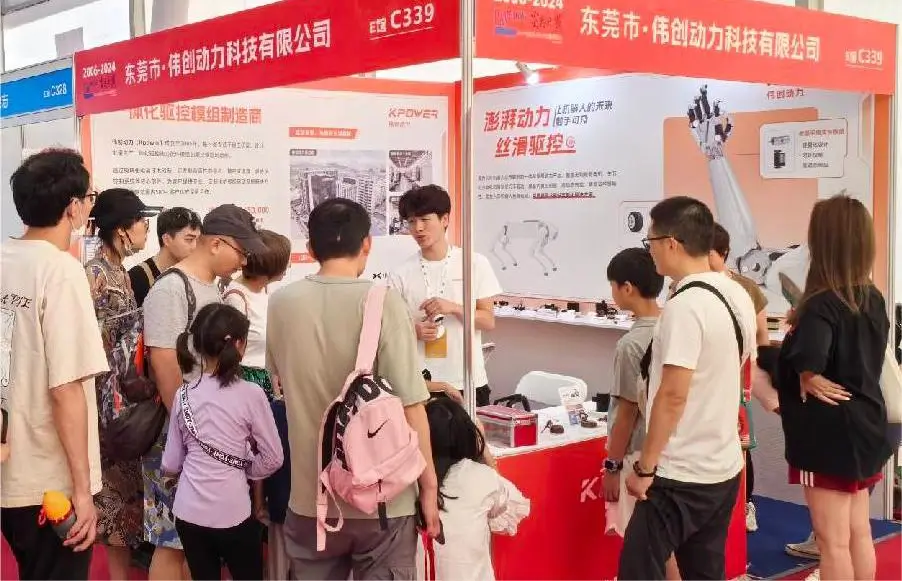Mastering Precision: The Art and Science of Servo Motor Speed Control
In the world of automation and robotics, movement isn’t just about getting from point A to point B—it’s about doing so with grace, precision, and speed that adapts seamlessly to the task at hand. At the heart of this sophisticated dance lies the humble yet mighty servo motor. These electromechanical marvels bring incredible control and accuracy to everything from industrial robots to hobbyist projects, but their true power is unlocked through effective speed control.

Picture a robotic arm assembling tiny electronics with meticulous care or a drone adjusting its propellers for steady hover—both rely on servo motors' agility. But controlling a servo motor's speed isn’t as simple as turning a knob; it involves a complex interplay of electronics, sensors, and algorithms working harmoniously to deliver desired performance.
In this article, we’ll explore the fascinating world of servo motor speed control. We’ll delve into the core principles that make it possible, the technologies powering it, and the innovative solutions shaping its future. Whether you're an engineer, a hobbyist, or just an enthusiast curious about how machines move with such finesse, understanding the nuances of servo motor speed control opens doors to endless possibilities.
The Basics of Servo Motor Operation
Before jumping into control techniques, let’s clarify what a servo motor is. Unlike standard motors, servo motors are designed for precise control of angular or linear position, velocity, and acceleration. They typically consist of a motor coupled with a feedback device, like an encoder or resolver, and a control circuit.
This feedback system continually sends information about the actual position or speed back to the controller, which then adjusts the motor's input to achieve and maintain the desired motion. This closed-loop feedback mechanism is what enables servo motors to be incredibly accurate and responsive.
The Importance of Speed Control
While maintaining the correct position is essential, controlling the speed adds an extra dimension of finesse. Precise speed control allows for smoother operation, reduces mechanical stress, optimizes cycle times, and enhances overall system efficiency. For example, in conveyor belts, slow and controlled movements prevent product damage; in robotic welding, varying speeds ensures clean, accurate seams.
In many applications, variable speed control is not just desired—it’s critical. The challenge is to design a system that responds quickly to changes, resists disturbances, and maintains stability under varying load conditions. This is where different control strategies and technologies come into play.
Control Techniques for Servo Speed
Several control strategies are employed to manage servo motor speed effectively:
Open-Loop Control: The simplest form, where the input command dictates the speed without feedback correction. While inexpensive and straightforward, it’s less accurate and susceptible to disturbances.
Closed-Loop Control: Also known as feedback control. It continuously monitors the motor's actual speed via sensors and adjusts the input to match the desired speed precisely. This approach is more complex but provides higher accuracy and stability.
Within this framework, popular control algorithms include:
Proportional-Integral-Derivative (PID) Control: The most common method, adjusting the motor input based on the difference between desired and actual speed. Tuning PID parameters is critical for balancing responsiveness and stability.
Model Predictive Control (MPC): An advanced technique that predicts future system states and adjusts inputs proactively, ideal for complex systems requiring high precision.
Digital and Analog Control Systems: Modern servo drives often incorporate digital signal processors (DSPs) or microcontrollers that implement these algorithms in real-time, providing flexibility and ease of tuning.
The Role of Electronics and Sensors
At the core of speed control systems are electronic drives—power amplifiers that control current flow to the motor based on control signals. These drives interpret signals from the controller (often a PLC, microcontroller, or computer) and modulate power transistors to adjust motor torque and speed.
Feedback sensors like encoders or resolvers report the motor's actual speed. Encoders, in particular, have evolved to provide high-resolution signals, enabling fine control. The quality of sensing directly impacts the control system’s accuracy, responsiveness, and robustness.
Practical Considerations
When designing a servo speed control system, several practical factors should be considered:
Load Variations: Changes in load affect the motor’s behavior. Controllers must compensate for these variations dynamically.
Response Time: How quickly the system reacts to change commands is vital, especially in high-speed applications.
Stability: Proper tuning is necessary to avoid oscillations or overshoot, which can cause mechanical wear or errors.
Power Requirements: Ensuring the power supply and drive components match the application's demand is essential for reliable operation.
Innovations in Servo Motor Speed Control
The field is continually advancing with innovations like:
Brushless DC (BLDC) Motors: Offering high efficiency and long life, they are becoming increasingly popular, paired with sophisticated control algorithms for even better speed regulation.
Sensorless Control: Eliminates or reduces physical sensors, using algorithms to estimate rotor position and speed, reducing cost and complexity.
Artificial Intelligence (AI): Machine learning models optimize control parameters dynamically, adapting to varying conditions in real-time for superior performance.
Integration with IoT: Connectivity allows for remote monitoring, diagnostics, and adaptive control strategies that improve uptime and efficiency.
In essence, servo motor speed control is a blend of precise hardware, clever algorithms, and smart software—working together to deliver motion that is not only fast and smooth but also adaptable and resilient.
Kpower has delivered professional drive system solutions to over 500 enterprise clients globally with products covering various fields such as Smart Home Systems, Automatic Electronics, Robotics, Precision Agriculture, Drones, and Industrial Automation.




































